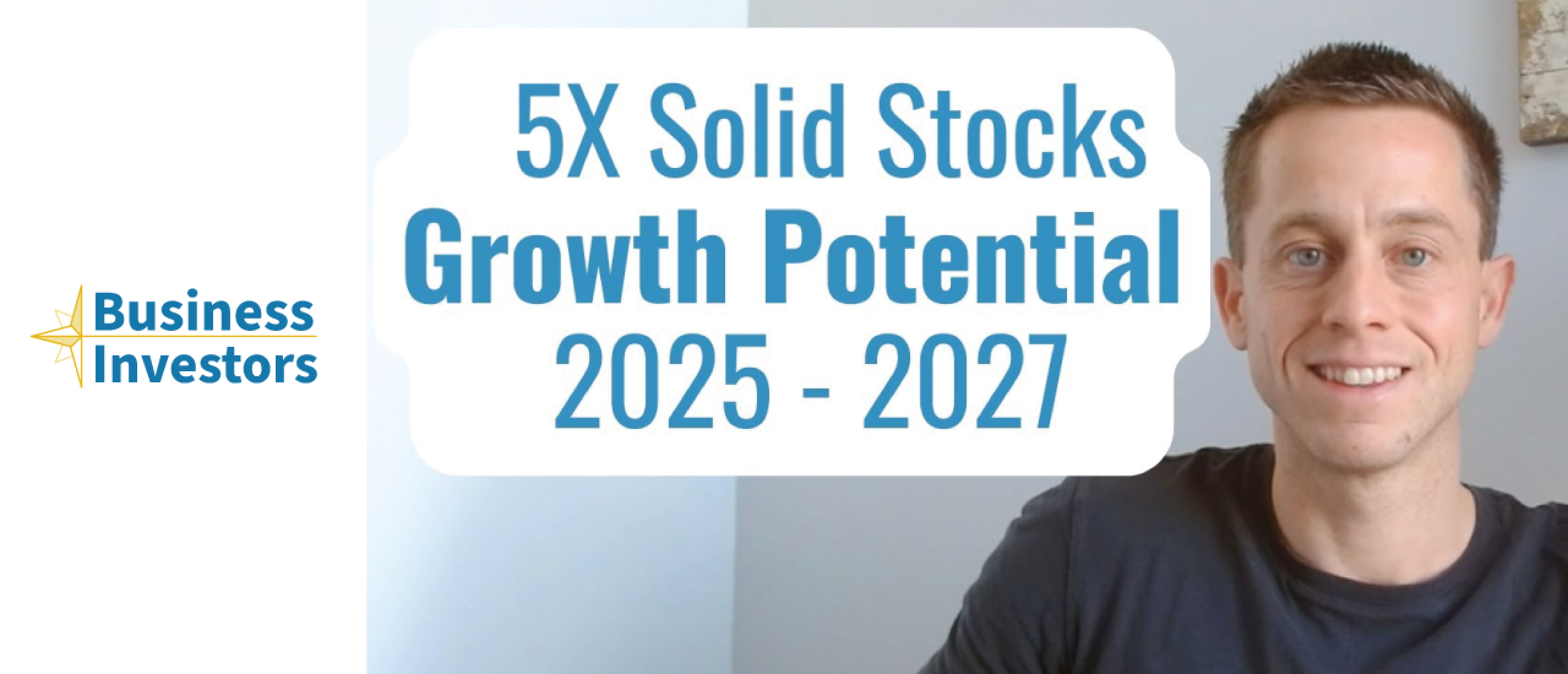
Looking to invest for the long term in 2025? Here are three unique, high-quality compounders with strong fundamentals and long-term potential. Every month, new market trends and stock data provide fresh opportunities for long-term investors. While short-term traders panic over volatility and macro headlines, smart investors look beyond the noise—toward companies with durable competitive advantages, healthy fundamentals, and room to grow. In this April 2025 update, we dive into three unique companies that stand out for their potential to compound value over time. These stocks aren’t just trending—they’re backed by a mix of statistical strength (via factor analysis), high growth potential, and strong underlying business models. Let’s break down each one, along with the risks, opportunities, and why they deserve a spot on your long-term radar.
1. JD.com (Ticker: JD)
Sector: E-commerce & Logistics (China)
Current Price: ~$40
Fair Value Estimate: ~$50
Upside Potential: Up to 70%
Rating: 4 Stars (Morningstar)
JD.com is one of the largest e-commerce and logistics companies in China. It's not just an online store—it's a massive holding company with diversified operations spanning retail, technology, and last-mile delivery logistics.
According to both Morningstar and Refinitiv, JD.com's fair value is estimated around $50, offering significant upside from its current price. The stock has scored high on factor analysis metrics for over a year, which suggests favorable statistical conditions for outperformance.
From a valuation standpoint, JD looks significantly undervalued when compared to U.S. tech giants like Amazon or Google. Its forward price-to-earnings (P/E) ratio is only around 9–10. If the stock were to revert to a more normalized P/E of 15, that alone could result in 30%+ annual returns. Based on historical multiples closer to 26, the upside could even exceed 60% per year. That’s serious growth potential.
So why is it trading so low?
The main reason is geographic and political risk. Chinese stocks face regulatory uncertainty, trade tensions, and limited transparency compared to U.S. counterparts. That's why some investors prefer ETFs like KWEB—a China internet ETF with exposure to JD.com, Alibaba, Tencent, and more—as a diversified approach to the region.
Still, JD.com boasts strong cash flow, impressive valuation metrics (low price-to-sales, price-to-cash-flow), and a large cash position. It’s a growth engine that simply looks too cheap to ignore—on paper.
However, profitability remains modest. Return on equity is positive, but return on capital is weaker. Margins are slim, and that can raise questions about the company’s ability to scale efficiently. Still, for long-term investors comfortable with the China risk, JD.com looks like a value play with serious upside.
Key Takeaway:
JD.com offers a rare blend of low valuation and high growth in the Chinese e-commerce space. While political risk remains, the fundamentals suggest it’s a strong long-term buy if you're looking for international diversification.
2. Sea Limited (Ticker: SE)
Sector: Gaming, E-commerce, Digital Finance
Current Price: ~$122
Fair Value Estimate: ~$160
Upside Potential: ~60%
Rating: 4 Stars (Morningstar)
Sea Limited is a Southeast Asian tech powerhouse with operations in gaming (via Garena), e-commerce (via Shopee), and digital finance (via SeaMoney). Despite a volatile journey, the company has managed to grow significantly in scale and diversify its business model.
Over the last year, Sea has rebounded strongly—even as many big tech firms have struggled. Momentum is on its side. Morningstar gives SE a four-star rating and places its fair value at around $160, implying about 60% upside from current levels.
The company’s story isn’t just about recovery—it’s about transformation.
After focusing on expansion and user acquisition for years (often at the expense of profitability), Sea is finally turning the corner. Analysts project long-term EPS growth of 50%, making it one of the fastest-growing tech companies globally.
Still, there are risks. Sea’s current P/E ratio is steep—estimated at around 60 for the coming year. High valuations require high execution. And with profit margins still low, there’s not much room for error. But if margins improve even slightly, earnings could skyrocket—and so could the stock price.
Despite the high multiple, many analysts agree that SE is moving in the right direction. If you assume a P/E of 30 instead of 60, that cuts the upside potential to around 3% annually based on current prices. But if earnings growth accelerates or the market assigns a premium multiple due to momentum and future expectations, returns could be far more substantial.
The recent rally hasn’t erased all volatility, and technical indicators suggest a short-term dip may be coming. But for long-term investors, such a pullback could be a perfect entry point.
Key Takeaway:
Sea Limited is a high-growth tech company finally reaching profitability. It’s volatile and richly valued, but the growth potential remains strong—especially in underserved digital markets across Asia.
3. Berkshire Hathaway (Ticker: BRK.A / BRK.B)
Sector: Conglomerate / Holding Company
Current Price: ~$490
Fair Value Estimate: ~$470 (Morningstar)
Upside Potential: ~6% (analyst target)
Rating: 2 Stars (Morningstar)
Factor Rating: Strong Buy (statistical model)
Berkshire Hathaway needs no introduction. The conglomerate led by Warren Buffett owns a sprawling portfolio of wholly-owned businesses and public equities, from Geico to Apple. It’s widely viewed as the gold standard of long-term investing.
But in 2025, is it still a buy?
From a valuation perspective, Berkshire appears fairly valued or slightly expensive. The stock’s P/E ratio is around 20, and Morningstar estimates fair value closer to $470, slightly below the current market price.
Despite that, factor models still rate it a strong buy, likely due to its resilience during recent market corrections. While many tech and growth stocks dropped 30–50% over the past year, Berkshire has held steady—or even appreciated.
The company’s cash position has also grown substantially, now over $300 billion. That war chest provides optionality: if markets decline further, Berkshire can scoop up undervalued companies and boost its long-term returns.
Still, the upside may be more muted. Even Buffett himself has said that a 10% annual return would be a success at Berkshire’s current size. And the inevitable passing of Buffett and Charlie Munger remains a wildcard for market sentiment—even though leadership transitions have been planned.
Some investors, especially growth-focused ones, might find more appeal in ETFs like QQQ or international plays like JD.com and Sea Limited. Berkshire is incredibly stable, but perhaps no longer the rocket ship it once was.
Key Takeaway:
Berkshire Hathaway is a reliable long-term hold with limited downside and moderate upside. Not the most exciting growth story, but perfect for those who value safety, diversification, and Buffett-style investing.
Conclusion: Long-Term Investing in 2025 Means Balancing Risk with Vision
When building a long-term portfolio in 2025, it’s not just about chasing what’s hot—it’s about finding companies with strong fundamentals, durable growth potential, and the ability to weather volatility.
The three stocks we explored—JD.com, Sea Limited, and Berkshire Hathaway—each bring something different to the table:
- JD.com is an undervalued China e-commerce play with growth potential and geopolitical risk.
- Sea Limited is a high-momentum tech stock transitioning from explosive growth to profitability.
- Berkshire Hathaway offers resilience, cash firepower, and stability—but with limited near-term upside.
Whether you’re seeking high-growth compounders or solid blue-chip anchors, these companies represent different strategies for long-term success.
The key is to do your own research, invest consistently, and avoid emotional decisions. Smart investing isn’t about being perfect—it’s about being patient.
Which of these companies do you think has the most long-term potential? Have you added any of them to your watchlist or portfolio? Let us know in the comments.
Monthly exclusive Stocks Analysis in your inbox?
Subscribe to our Monthly Stocks Analysis to get data-driven analysis, dividend ideas, and timeless investing strategies for building financial freedom.











